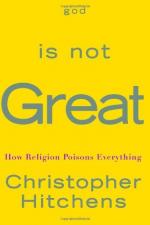|
This section contains 1,556 words (approx. 6 pages at 300 words per page) |

|
[Taxi Driver] is, in part, a film about films. But it is unusual in being expressive of, and simultaneously about, a particular kind of film, which might be called "the pornography of violence." Through the windshield of Travis Bickle's cab, the audience sees the repeated image of movie marquees. Through most of the film, these marquees advertise erotic films, displaying titles like "Swedish Marriage Manual" or "Anita Nymphet." But after the film's bloody catharsis, and subsequent apotheosis of Travis, as a vigilante hero, the surrealistic street scene behind the closing credits reveals marquees, which contain the following camera-selected fragments, "Charles Bronson," "Mafia," "Blood," and "Killer." Although the cathartic scene of Taxi Driver includes the bloody killing of a "mafioso," the effect of the film is far different from that of other vigilante films, such as the Bronson vehicle, Death Wish. Scorsese [and coscreenwriter Paul Schrader] … present a protagonist...
|
This section contains 1,556 words (approx. 6 pages at 300 words per page) |

|


